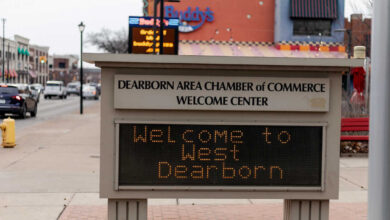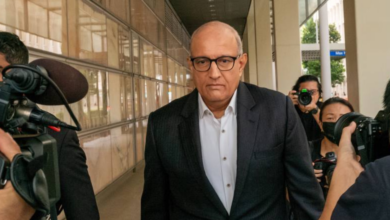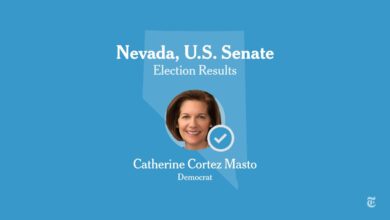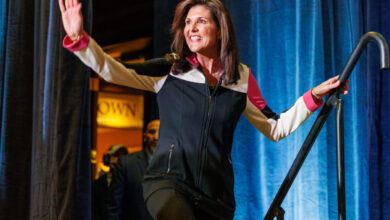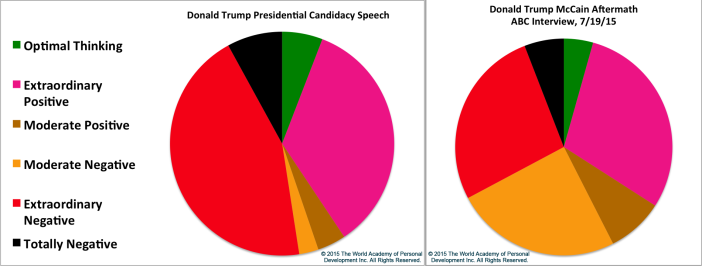
Donald Trump Culture Decline A Critical Look
Donald Trump culture decline is a complex and often contentious issue. This blog post delves into the various ways Trump’s presidency may have influenced cultural shifts, considering economic factors, media portrayals, and societal responses. From policy decisions to public discourse, we’ll explore the potential impacts of his era on American culture.
This exploration examines the multifaceted nature of the perceived cultural shift, examining not only the president’s actions but also the reactions and adaptations of different segments of society. The analysis considers the role of media, economics, and social movements in shaping this narrative.
Defining “Culture Decline” in the Trump Era
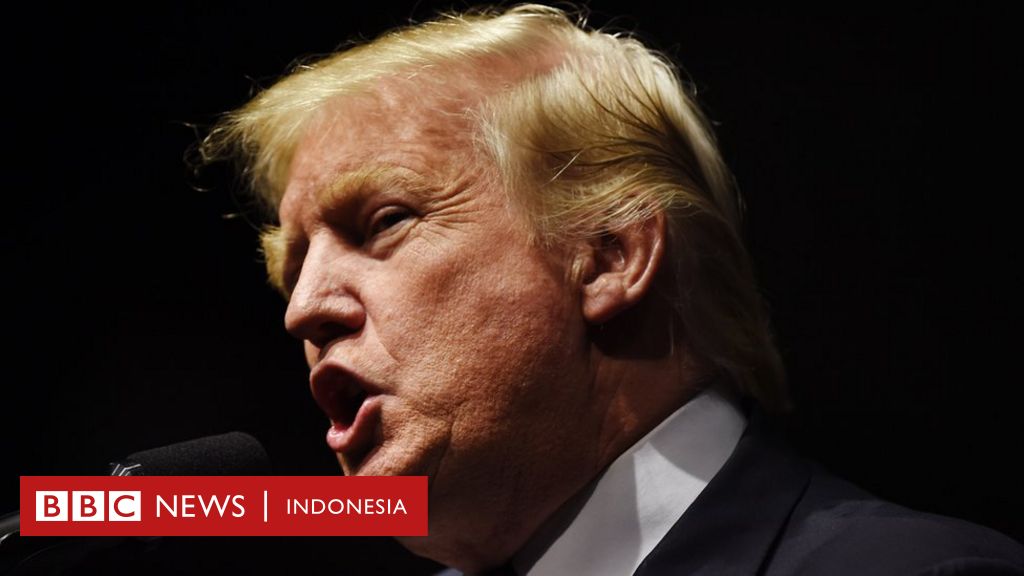
The concept of “cultural decline” is a complex and often contested one, especially in the context of rapid societal shifts. It frequently evokes emotional responses and diverse interpretations, often rooted in individual values and perspectives. This exploration delves into defining cultural decline, exploring the subjective and objective dimensions of this perception, and analyzing historical parallels.The notion of cultural decline is rarely a simple observation.
It’s more accurately described as a perceived shift away from previously held values and norms, often accompanied by anxiety about the future. These perceived changes can be driven by technological advancements, economic shifts, or evolving social attitudes. This analysis will examine these potential contributing factors in the context of the Trump era.
Defining Cultural Decline: Societal Shifts and Values
Cultural decline is not a monolithic phenomenon. It encompasses a broad spectrum of perceived changes in societal values, norms, and practices. These shifts can involve changes in moral codes, artistic expression, or social interactions. It often arises from the feeling that certain traditional values are being lost or replaced.
Interpretations of Cultural Decline: Objective vs. Subjective
Assessments of cultural decline are often intertwined with personal viewpoints. Objective assessments, grounded in data and measurable trends, might focus on factors like declining literacy rates, increasing rates of certain social problems, or shifts in demographic patterns. Subjective assessments, on the other hand, are based on individual interpretations of cultural shifts, often tied to personal values and experiences.
Both interpretations are valuable in understanding the complexities surrounding perceived cultural change.
Historical Context of Cultural Change
Throughout history, periods of perceived cultural decline have been common. The late 1960s and 1970s, marked by significant social movements and cultural upheaval, are often cited as periods of substantial societal change that some viewed as a decline. Similarly, the early 20th century saw the rise of new artistic movements and social norms that challenged traditional values, leading to debates about the direction of society.
These periods highlight that societal evolution is a constant process.
Comparing Societal Values Across Different Periods
| Period | Key Societal Values | Examples |
|---|---|---|
| Pre-World War II America | Emphasis on traditional family structures, religious values, and hard work. | Emphasis on conformity, patriotism, and respect for authority. |
| 1960s-1970s | Questioning of traditional authority, increased emphasis on individual expression, and acceptance of diverse lifestyles. | Rise of feminism, civil rights movements, and anti-establishment sentiment. |
| The Trump Era | Increased polarization, heightened nationalism, and a focus on perceived economic concerns. | Rise of social media as a platform for diverse viewpoints, political discourse marked by strong opinions, and economic anxieties. |
This table provides a simplified overview of societal values across different periods. It’s important to remember that these are generalizations, and values existed within a complex interplay of forces and viewpoints within each period. The Trump era, in particular, is characterized by a significant level of political and social division, which has influenced perceptions of cultural decline.
Donald Trump’s cultural impact has been a hot topic lately. His influence on the political landscape, and how it might be affecting broader societal values, is something people are discussing a lot. Understanding the dynamics at play in the Nevada caucus primary elections, like the Nevada caucus primary explainer , can help shed light on the current political climate and the evolving political culture.
Ultimately, this ongoing discussion about the decline in certain aspects of American culture is undeniably tied to the figures who hold prominent positions in these elections.
Trump’s Policies and Perceived Impact on Culture
The Trump presidency sparked intense debate about its impact on American culture. Critics argued his policies and rhetoric exacerbated existing societal divisions, while supporters contended they reflected a necessary shift towards a more nationalistic and traditionalist perspective. This analysis delves into specific policy initiatives, examining potential links to cultural shifts and the influence on public discourse.Examining Trump’s policies requires considering their potential to influence diverse cultural groups in the United States.
The varying degrees of impact, whether positive or negative, on different communities are crucial to understanding the complex relationship between policy and cultural change. The goal is not to make judgments but to analyze the claims and counterclaims surrounding this significant period in American history.
Trump’s Immigration Policies and Their Cultural Implications
Trump’s administration implemented several immigration policies that generated substantial controversy. The “zero tolerance” policy at the border, separating families, provoked widespread condemnation. These policies sparked debates about the American values of compassion, fairness, and the role of government in protecting vulnerable populations. The proposed travel ban targeting several Muslim-majority countries ignited protests and legal challenges, raising concerns about religious discrimination and the balance between national security and civil liberties.
These policies were deeply divisive, with arguments ranging from national security concerns to allegations of discrimination.
Economic Policies and Their Impact on Cultural Norms
Trump’s economic policies focused on tax cuts and deregulation. The 2017 Tax Cuts and Jobs Act significantly reduced corporate and individual income taxes. Proponents argued this would stimulate economic growth and benefit all segments of society. Critics, however, contended that these cuts primarily benefited the wealthy, potentially widening the income gap and exacerbating existing inequalities. The impact of these policies on cultural norms remains a subject of ongoing debate, with some suggesting that economic disparities can affect social cohesion and cultural values.
Donald Trump’s cultural impact seems to be waning. The recent results of the New Hampshire Democratic primary, available here , suggest a shift in voter sentiment away from the populist rhetoric he embodies. This could be a significant indicator of a broader cultural decline in Trump’s influence, and a sign of a more nuanced political landscape emerging.
Economic downturns, on the other hand, have been shown to alter cultural preferences, leading to greater emphasis on community and cooperation.
Trump’s Approach to Education and its Potential Cultural Consequences
Trump’s administration advocated for educational reforms, emphasizing school choice and standardized testing. His administration’s proposals, though debated, sought to influence the structure and content of education. The implications for various cultural groups were multifaceted. Supporters believed that school choice could provide options for families, while critics raised concerns about potential inequities in access and educational quality. The impact on cultural values was a key aspect of the discussion.
The debate encompassed concerns about the potential for increased standardization versus the preservation of diverse educational approaches.
Table: Trump’s Key Policy Decisions and Potential Cultural Impact
| Policy Decision | Potential Impact on Different Cultural Segments |
|---|---|
| Immigration Policies (e.g., “zero tolerance,” travel ban) | Increased tensions between different groups; heightened anxiety among immigrant communities; debate on American values regarding compassion and justice. |
| Tax Cuts and Jobs Act | Potential for increased income inequality; varied impact on different economic classes and communities; debate about fairness and the role of government in redistribution. |
| Educational Policies (e.g., school choice, standardized testing) | Debate about equity and access to quality education; potential for greater diversity in educational options; concerns about the impact on different cultural groups’ educational outcomes. |
Societal Responses and Reactions to Trump
The Trump presidency ignited a firestorm of reactions across the United States and the globe. From fervent support to vehement opposition, the diverse responses reflected deep-seated divisions within American society. These reactions manifested in various forms, from political activism to social media discourse, revealing a complex interplay of political, social, and cultural forces.The diverse reactions to Trump’s presidency and policies underscore the polarization of American society.
Supporters often lauded his populist stances and perceived economic successes, while opponents criticized his rhetoric, policies, and perceived disregard for democratic norms. This polarization, driven by a variety of factors, shaped the landscape of American discourse and activism during the Trump era.
Diverse Reactions to Trump’s Policies
The Trump administration witnessed a wide spectrum of reactions, ranging from enthusiastic support to fierce opposition. Supporters often cited economic policies, such as tax cuts, as evidence of positive change. Opponents, on the other hand, pointed to issues like immigration policies and perceived attacks on democratic institutions as detrimental to the nation. This dichotomy in perspectives created a highly charged political climate.
Public Demonstrations and Protests
Numerous public demonstrations and protests characterized the Trump era. Protests against Trump’s policies, such as his travel ban and his response to social justice movements, were frequently organized and attended by diverse groups. These protests, often fueled by social media, reflected varying levels of public discontent and highlighted the importance of social activism. Examples include large-scale rallies against the travel ban and demonstrations related to racial justice issues.
These events often became focal points for both support and opposition, leading to heightened tensions in the public sphere.
Evolution of Social Movements
The Trump era witnessed the evolution of existing social movements and the emergence of new ones. The #MeToo movement gained significant momentum, challenging prevailing power dynamics and confronting societal norms. The Black Lives Matter movement also saw a resurgence and became deeply intertwined with the Trump presidency, with many protests emerging in response to Trump’s policies and rhetoric.
Role of Social Media
Social media played a crucial role in shaping public opinion and amplifying cultural disagreements during the Trump era. The rapid dissemination of information, often with varying degrees of accuracy, contributed to the polarization of public discourse. Social media platforms became spaces for both coordinated campaigns and spontaneous expressions of support and opposition. The role of social media in shaping public opinion is a complex and ongoing debate.
Table of Reactions During the Trump Administration
| Type of Reaction | Frequency | Description |
|---|---|---|
| Support | Significant | Manifested in rallies, political endorsements, and public statements. Often centered around economic policies and perceived nationalistic agendas. |
| Opposition | Widespread | Expressed through protests, boycotts, and public criticism. Frequently focused on concerns about policy changes and democratic norms. |
| Mixed | Present | Included a range of nuanced perspectives and sentiments, often reflecting personal experiences and values. |
Cultural Trends and Shifts During the Trump Era
The Trump presidency, marked by significant political upheaval, undeniably left its imprint on the cultural landscape. This period witnessed a complex interplay of anxieties, affirmations, and evolving social norms. The election and its aftermath prompted a reckoning with existing social structures and power dynamics, leading to both reaffirmations of established identities and the emergence of new expressions of cultural identity.The era saw a rise in polarized viewpoints, and the ensuing discussions shaped not only political discourse but also artistic and media representations.
The conversations surrounding identity, race, and social justice intensified, influencing artistic creations, literary works, and popular media. The rapid dissemination of information via technology further amplified these shifts, creating a more dynamic and interconnected cultural environment.
Key Cultural Trends
A defining characteristic of the Trump era was the heightened visibility and prominence of diverse cultural viewpoints. This was accompanied by increased polarization and debate about issues such as immigration, race relations, and gender equality. These discussions played out in various forms of artistic and media expression.
- Rise of Populism and Nationalism: The Trump presidency saw a resurgence of populist and nationalistic sentiments, which influenced various forms of media. This manifested in the increased popularity of certain genres of music, and in the themes explored in literature and film. For instance, patriotic themes and narratives emphasizing national identity became prominent in popular music and movies.
- Increased Scrutiny of Traditional Media: The era witnessed a growing skepticism towards traditional media outlets, particularly among segments of the population. This skepticism manifested in the rise of alternative media sources, such as social media platforms, and in the increased consumption of content from these platforms. The spread of misinformation and the role of social media in shaping public opinion also became prominent themes in the media and cultural discourse.
- Evolving Identity Politics: Discussions surrounding identity, race, gender, and sexuality gained unprecedented visibility. This resulted in a range of artistic and literary expressions reflecting these evolving views. For instance, a surge in literature and film focusing on diverse perspectives and experiences became evident.
Artistic and Media Expressions
Various artistic expressions reflected the cultural shifts of the Trump era. These included films, music, literature, and visual art.
- Film and Television: Movies and TV shows often reflected the heightened political polarization and social anxieties of the time. Themes of division, identity, and social injustice became more prevalent. For example, the increased focus on political narratives in popular films and TV shows reflected the societal discourse.
- Music: Music often served as a vehicle for expressing social and political sentiments. The rise of alternative and independent music offered platforms for diverse voices and perspectives, while some popular genres embraced populist themes.
- Literature: Literary works often grappled with the social and political realities of the era. Themes of identity, social justice, and the impact of political events became prominent in novels and other literary genres. Authors addressed the social unrest, cultural divides, and individual struggles within the context of the era.
Technology and Globalization
The rapid advancement of technology and globalization further amplified cultural shifts during the Trump era.
Social media platforms, for instance, became crucial tools for the dissemination of information, the mobilization of support, and the expression of diverse viewpoints. This facilitated both the rapid spread of information and the challenges in discerning credible sources. Globalization also influenced the interconnectedness of cultural exchanges, with international collaborations in artistic and media productions becoming more frequent.
Demographic Responses
Different demographics experienced and responded to the cultural changes in varying ways.
- Political Polarization: Political polarization became a defining characteristic of the era. Different demographic groups responded to the political climate in diverse ways, ranging from heightened activism to disillusionment.
- Social Justice Movements: Social justice movements continued to gain momentum. Various groups mobilized and advocated for change, often in response to perceived injustices. The reactions to these movements varied among different demographic groups, and there were both supportive and dissenting voices.
Cultural Trends Over Time
| Time Period | Key Cultural Trends | Significant Events |
|---|---|---|
| 2017-2018 | Rise of populism and nationalism; increased scrutiny of traditional media; evolving identity politics | Trump’s election; ongoing social justice movements; increased use of social media |
| 2019-2020 | Heightened political polarization; growing concerns about social and economic inequality; increased activism | Ongoing political debates; economic uncertainties; global events impacting social movements |
Economic Factors and Their Relationship to Culture
The Trump era witnessed significant economic shifts intertwined with evolving cultural landscapes. Economic anxieties and opportunities, alongside government policies, profoundly influenced societal attitudes and expressions of culture. This section explores the intricate relationship between economic conditions and cultural changes during this period.Economic conditions often serve as a backdrop against which cultural narratives are played out. Times of prosperity often lead to greater social fluidity and experimentation, while economic hardship can foster anxieties, resentment, and a desire for social stability.
The Trump administration’s policies and their perceived impact on different economic sectors shaped cultural dialogues and reactions.
Economic Conditions and Cultural Shifts, Donald trump culture decline
Economic anxieties, particularly among working-class Americans, played a pivotal role in shaping cultural attitudes during the Trump era. Concerns about job security, stagnant wages, and globalization contributed to a sense of economic insecurity. This insecurity manifested in various cultural expressions, ranging from political activism to a heightened interest in nationalist themes.
Economic Disparities and Cultural Tensions
Economic disparities significantly contributed to cultural tensions. The gap between the wealthy and the working class widened during this period, leading to social divisions and debates over economic fairness. This disparity influenced cultural discussions surrounding income inequality, wealth distribution, and the role of government in addressing economic hardship.
Impact of Economic Policies on Cultural Groups
Economic policies enacted during the Trump era had varying impacts on different cultural groups. For example, immigration policies, trade agreements, and tax cuts disproportionately affected certain communities, generating cultural backlash and resistance. The perception of these policies as favoring certain groups over others fueled cultural divisions.
Economic Opportunities and Cultural Expressions
Economic opportunities, or their absence, shaped cultural expressions in profound ways. For instance, access to education, healthcare, and entrepreneurship influenced how individuals and communities expressed themselves culturally. The availability of opportunities or the perception of limited access significantly impacted cultural production and identity formation.
Correlation between Economic Indicators and Cultural Shifts
The following table illustrates the correlation between key economic indicators and notable cultural shifts during the Trump era. Note that this is a simplified representation, and the relationship between economic factors and culture is complex and multifaceted.
| Economic Indicator | Cultural Shift |
|---|---|
| Increased national debt | Concerns about government spending and economic stability, rise of populist movements |
| Rising unemployment in specific sectors | Increased anxiety and resentment toward globalization and perceived economic disadvantages |
| Tax cuts for corporations | Debate on fairness and wealth distribution, perceptions of economic elitism |
| Immigration policies | Increased cultural tensions related to immigration and national identity, debates over social integration |
| Increased trade protectionism | Cultural discussions about national interests, protectionism, and international relations |
Media Representation and Cultural Narratives: Donald Trump Culture Decline
The media’s portrayal of Donald Trump and his impact on culture was undeniably significant, shaping public perception and often becoming a cultural narrative itself. This portrayal varied considerably across different outlets, reflecting differing political leanings and editorial agendas. Understanding these variations is crucial to analyzing the cultural shifts of the Trump era. News coverage, social media trends, and entertainment portrayals all played a part in shaping the collective understanding of the era.
Donald Trump’s influence on American culture seems to be fading, a decline that’s perhaps mirrored in other global events. The recent legal victory for Thailand’s Pita Limjaroenrat, as reported in this article , showcases a different kind of leadership emerging, one that may offer a stark contrast to the Trump era’s divisive rhetoric and style. This shift suggests a broader cultural movement away from the aggressive populism that Trump represented, although the reasons for this are complex and multifaceted.
Media Portrayals of Trump and Cultural Impact
Media outlets often presented Trump as a polarizing figure. His rhetoric and policies were frequently scrutinized, leading to diverse interpretations of their influence on culture. News coverage, particularly during presidential campaigns and his presidency, often framed him as either a disruptive force or a catalyst for change. This duality in media portrayals influenced how the public perceived the cultural shifts occurring during his time in office.
Role of Biased Reporting and Agenda-Setting
News organizations, driven by their own political leanings and editorial agendas, played a significant role in shaping the cultural narratives surrounding Trump. Different outlets emphasized different aspects of his presidency and policies, sometimes leading to selective reporting that favored a particular narrative. This bias in reporting created a fragmented understanding of cultural issues and the impact of Trump’s policies.
For example, coverage of economic policies or social issues was often framed through a lens that reinforced the political stance of the media outlet.
Differing Perspectives on Cultural Shifts
Different media outlets presented distinct perspectives on cultural shifts during the Trump era. Conservative outlets often presented a narrative that emphasized economic growth and a return to traditional values. Liberal outlets, on the other hand, frequently highlighted concerns about social divisions, political polarization, and potential harm caused by Trump’s policies. This difference in perspective led to conflicting interpretations of cultural trends.
For instance, reports on immigration policies, or on issues concerning race and gender, were presented through lenses that often reflected the ideological positions of the media outlet.
Comparison of Media Representations Before and After the Trump Era
The media’s approach to cultural issues changed considerably during the Trump era. Before Trump, the media landscape had a certain level of perceived objectivity and neutrality, albeit often criticized for implicit biases. However, the Trump presidency fostered a more explicitly political climate in media reporting, where opinions were more openly expressed and often aligned with partisan positions. This change affected the way cultural issues were framed and discussed.
Media Outlets and Approaches to Cultural Issues
| Media Outlet | General Approach to Cultural Issues | Example of Reporting on Cultural Shift |
|---|---|---|
| News Network A (Conservative) | Emphasized economic prosperity and traditional values. | Focused on job creation and the perceived benefits of tax cuts. |
| News Network B (Liberal) | Highlighted social divisions and concerns about political polarization. | Reported on the rise in racial tensions and the perceived impact on civil rights. |
| News Network C (Centrist) | Attempted a balanced perspective, but often struggled to overcome partisan divides. | Presented both sides of an issue but might have struggled to provide a definitive conclusion or unbiased analysis. |
| Social Media Platform X | Displayed highly fragmented and often biased perspectives. | Showed a proliferation of opinions and narratives, often reinforcing existing biases. |
| Social Media Platform Y | Displayed highly fragmented and often biased perspectives. | Showed a proliferation of opinions and narratives, often reinforcing existing biases. |
The table above provides a simplified overview of the diverse approaches to cultural issues. The specific examples used are illustrative and not exhaustive.
Long-Term Effects and Future Implications
The Trump presidency, with its unique blend of policy decisions and rhetoric, has undeniably left a lasting mark on American culture. Understanding the potential long-term consequences of this era requires a nuanced look beyond the immediate reactions, exploring the ways in which social cohesion, identity, and values may shift and evolve. This section will examine the potential trajectories of American culture in the post-Trump era, considering ongoing debates and conflicts, and possible future scenarios.The legacy of the Trump era is complex and multifaceted.
While the specific policies and pronouncements of the administration are no longer current, the underlying cultural anxieties and divisions they exacerbated are likely to influence American society for years to come. The impact of these divisions on social cohesion and the future of American identity is a critical consideration.
Potential Impacts on Social Cohesion
The divisive rhetoric and policies of the Trump era contributed to a noticeable erosion of social trust and cohesion. Political polarization intensified, and deep divisions emerged regarding issues such as immigration, healthcare, and the role of government. These divisions are not likely to disappear overnight. The future of social cohesion will depend on the ability of different factions to find common ground and rebuild bridges of understanding.
Reconciling these deeply entrenched differences will require sustained effort and a willingness to engage in respectful dialogue.
Impacts on Identity and Values
The Trump era significantly influenced how Americans define and express their identities. National identity became a highly contested concept, and different groups grappled with their place in a rapidly changing social landscape. The rise of identity politics and the emphasis on individual values were significant developments that will continue to shape the American cultural landscape in the coming years.
This is a dynamic process, with the ongoing interplay of different identities and values contributing to a constantly evolving American identity.
Predictions on Cultural Evolution in the Post-Trump Era
Predicting the precise trajectory of cultural evolution is impossible, but several potential directions can be considered. The rise of social media and online communication has drastically altered the ways in which information is disseminated and cultural trends are formed. The post-Trump era may witness a renewed focus on community engagement, local activism, and the exploration of diverse perspectives.
Donald Trump’s presidency seemed to accelerate a worrying decline in cultural civility. This trend, unfortunately, extends beyond the political sphere. Recent news about false immunization records in Nassau County, specifically concerning midwife vaccinations, midwife vaccinations false immunization records nassau county , highlights a disturbing disregard for public health and potentially puts vulnerable populations at risk. It’s a disheartening reflection of a broader societal trend towards mistrust and misinformation that Trump’s rhetoric likely exacerbated.
Conversely, deep-seated divisions and anxieties could lead to increased polarization and further social fragmentation. The future direction depends on the actions and choices of individuals and communities.
Ongoing Debates and Conflicts
The Trump era has fueled ongoing debates and conflicts on various social and political issues. These debates will likely continue to shape the cultural landscape in the years to come. Discussions surrounding immigration, race relations, economic inequality, and the role of government will remain central to the national conversation. These discussions will require a willingness to engage in respectful dialogue and to seek common ground.
Donald Trump’s influence on culture seems to be waning, a trend that’s been evident for a while now. It’s hard to pinpoint the exact cause, but perhaps the recent news of Chris Young’s charges being dropped here might offer a glimpse into the changing cultural landscape. It’s possible that the public is simply less inclined to embrace the kind of divisive rhetoric and actions often associated with Trump’s era.
Regardless, the overall trend suggests a potential shift in cultural values.
The potential for compromise and consensus-building will be crucial to navigating these complex issues.
Future Scenarios and Potential Consequences
| Scenario | Potential Consequences |
|---|---|
| Increased Polarization | Further erosion of social trust, difficulty in finding common ground, heightened political tensions. |
| Renewed Focus on Community | Increased local activism, stronger sense of belonging, potential for more inclusive and diverse communities. |
| Shifting Values and Identities | Evolving notions of national identity, exploration of new forms of expression, possible cultural clashes. |
| Continued Economic Disparity | Exacerbation of existing inequalities, potential for social unrest, continued focus on economic justice. |
The above table Artikels potential future scenarios and their corresponding consequences. It’s crucial to remember that these are just possibilities, and the actual outcomes will depend on the choices made by individuals, communities, and the political system. The future of American culture is a dynamic process shaped by the actions and interactions of those who live within it.
Conclusive Thoughts
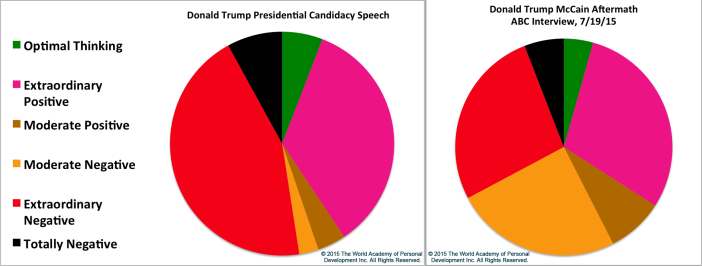
In conclusion, the Trump era presents a multifaceted case study in cultural change. The interplay of policy, public reaction, and media coverage created a complex and often polarized environment. While definitive conclusions are challenging, this analysis highlights the significant impact of political leadership on societal values and cultural trends. The post-Trump era will likely continue to grapple with the lingering effects of this period.
User Queries
What were some key economic policies of the Trump administration, and how did they relate to cultural shifts?
Trump’s economic policies, such as tax cuts and trade disputes, had a considerable impact on different economic sectors. These policies influenced job markets and economic opportunities, which in turn affected cultural expressions and values.
How did social media play a role in shaping public opinion during the Trump era?
Social media platforms were crucial in amplifying public discourse during Trump’s presidency. They became significant tools for both support and opposition, facilitating the rapid spread of information and opinions, which profoundly influenced public perception and cultural discussions.
What are some examples of artistic or literary expressions reflecting cultural trends during this period?
Artistic and literary works often reflect the prevailing cultural zeitgeist. Examples include increased awareness of social and political issues, new forms of protest art, and diverse perspectives emerging in literature.

